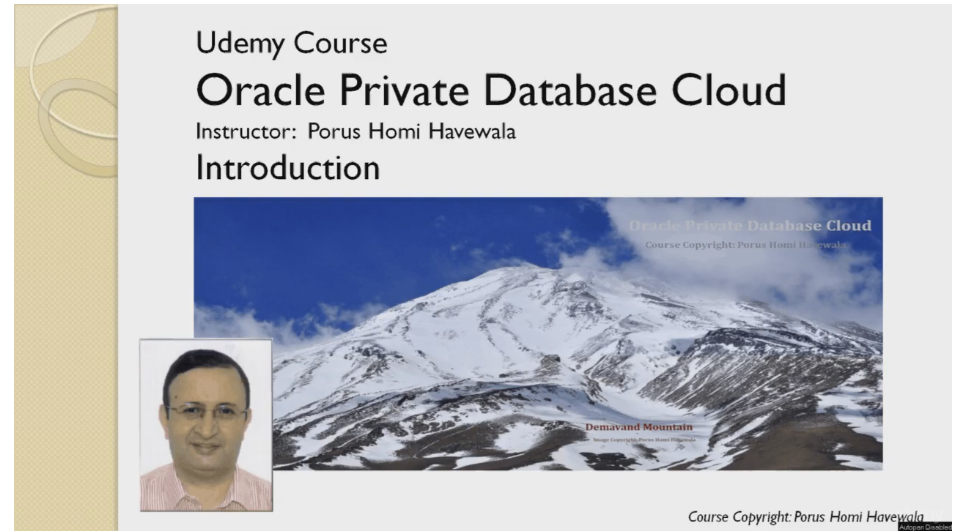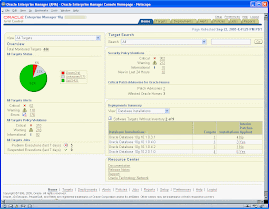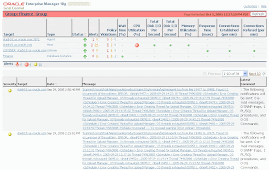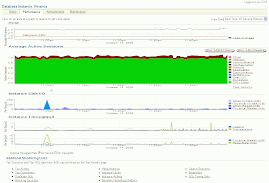Steps to Fast Track your Database Cloud implementation on Exadata
By Nilesh Agrawal on Feb 13, 2014
Oracle Exadata Database Machine is the ideal consolidation platform for Enterprise Database Cloud and Oracle Enterprise Manager provides the most optimized and comprehensive solution to rapidly setup, manage and deliver Enterprise Clouds. Clearly, very significant innovations have been delivered via Exadata X4, Enterprise Manager 12c and Database 12c in Cloud Computing space and customers can start realizing benefits from this combination of most powerful and unique enterprise database cloud solution in industry.


There are 2 separate automation kits that are provided with EM 12c, first kit is for enabling rapid monitoring and management setup of Exadata stack in EM 12c and second kit is for rapid setup of DBaaS -
5) Setup Database Cloud Using Rapid Start Kit - Once you have setup Exadata management in EM 12c, next step is to setup database cloud. Refer to Rapid Start Kit for setting up cloud for both DBaaS and Pluggable DBaaS/PDBaaS. This kit will help achieve the following -
/emcli login -username=sysman
/emcli @exadata_cloud_setup.py –dbaas
Above command will use dbaas_cloud_input.xml (under cloudsetup/config) as input file for configuring DBaaS./emcli @exadata_cloud_setup.py –pdbaas
Above command will use pdbaas_cloud_input.xml (under cloudsetup/config) as input file for configuring PDBaaS

As per OracleVoice blog on Forbes.com: "Why Database As A Service (DBaaS) Will Be The Breakaway Technology of 2014":
"Database as a Service (DBaaS) is arguably the next big thing in IT. Indeed, the market analysis firm 451 Researchprojects an astounding 86% cumulative annual growth rate, with annual revenues from DBaaS providers rising from $150 million in 2012 to $1.8 billion by 2016."
In this blog post, I will walk through the steps aiming to simplify DBaaS Setup on Exadata and also describe automation kits available to achieve the following rapidly -
- Setup Monitoring and Management of Exadata Database Machine platform in EM 12c
- Setup and Deliver DBaaS on Exadata using EM 12c
- Manage and Optimize Exadata and EM 12c powered DBaaS cloud platform on an ongoing basis
There are 2 separate automation kits that are provided with EM 12c, first kit is for enabling rapid monitoring and management setup of Exadata stack in EM 12c and second kit is for rapid setup of DBaaS -
1) Deploy EM 12c site or use existing site - If you do not have existing EM 12c R3 setup, you can use EM Automation Kit for Exadata for installing EM 12c R3 Plug-in update 1. This kit is available via patch 17036016 on My Oracle Support(MOS) and can be used to deploy EM 12c latest release. Refer to Readme of patch and MOS note "Obtaining the Oracle Enterprise Manager Setup Automation kit for Exadata (Doc ID 1440951.1)" for additional details. Please note that this will setup EM12c Oracle Management Service along with Management Repository. It can be deployed on a single m/c or OMS and OMR can be setup on different machines.
2) Deploy EM 12cR3 agents and required plug-ins on Exadata Machine - Agent kit is also part of the same EM Automation Kit for Exadata and can be used for deploying agents and plug-ins on Exadata stack. Refer to MOS note "Obtaining the Oracle Enterprise Manager Setup Automation kit for Exadata (Doc ID 1440951.1)" for additional details. Best practice is to use most recent version of Agent kit and also deploy latest plug-ins. Patch details for respective platform are described in the MOS note.
Agent kit script will require Java 1.6.0_43 or greater version on database node where this script is being run. Agent kit script will need to be run as root OS user on Exadata db node, however JAVA_HOME and PATH with JAVA_HOME/bin should be set up as agent OS owner, so these OS env variables need to setup in profile of agent OS owner.
Agent Automation kit helps with achieving following -
- EMCLI setup on Exadata Server
- EM 12c R3 site compatibility checks
- Setup and remove SSH between Exadata nodes to test SSH setup
- Deploy EM 12c Agent and required Plugins on all DB Nodes of Exadata Machine
- Confirm Exachk tool availability and run Exachk tool
- Run Exadata Discovery Prerequisites
- Discover Targets Cluster, Grid Infrastructure, RAC database and listener targets
Note - In case of Exadata X4, ensure you have the EM 12cR3 latest Bundle patch(released in January 2014). Refer to following MOS notes -
Enterprise Manager 12.1.0.3 Bundle Patch Master Note (Doc ID 1572022.1)
Enterprise Manager for Exadata Plug-in 12cR3 Bundle Patch Bug List (Doc ID 1613177.1)
Enterprise Manager 12.1.0.3 Bundle Patch Master Note (Doc ID 1572022.1)
Enterprise Manager for Exadata Plug-in 12cR3 Bundle Patch Bug List (Doc ID 1613177.1)
3) Discover Grid Infrastructure and RAC targets – Above setup script will discover Targets Cluster, Grid Infrastructure, RAC database and listener targets. Discover Grid Infrastructure, ASM and RAC targets manually if required.
4) Please note that this setup script will not discover Oracle Exadata Database machine target in EM 12c. You need to discover the machine using following steps
- From the Setup menu, select Add Targets, then select “Add targets Manually”.
- In the “Add Targets Manually” page, select 'Add Targets Using Guided Process (Also Adds Related Targets)' and Target Type as Oracle Exadata Database Machine.
- Click Add Using Guided Discovery and follow the wizard.
5) Setup Database Cloud Using Rapid Start Kit - Once you have setup Exadata management in EM 12c, next step is to setup database cloud. Refer to Rapid Start Kit for setting up cloud for both DBaaS and Pluggable DBaaS/PDBaaS. This kit will help achieve the following -
- Create Cloud Admin, SSA Admin and SSA User custom roles
- Create Cloud Admin, SSA Admin and SSA Users
- Grant Quota to SSA User custom roles
- Setup Zones with Placement Policy Constraints
- Setup Pools with Placement Constraints
- Setup Service Template/Catalog and grant it SSA User custom roles.
Here are brief steps for setting up Database Cloud using Rapid start Kit, available in EM Agent Kit 12.1.0.3.0, after login to Exadata machine first DB node as EM 12c agent owner
- Change to
/cloudsetup directory. - Review the input files under config directory and customize the dbaas_cloud_input.xml for configuring DBaaS cloud and pdbaas_cloud_input.xml for configuring Pluggable Database as a Service.
- Run the following command to setup DBaaS on Exadata Machine.
Above command will use dbaas_cloud_input.xml (under cloudsetup/config) as input file for configuring DBaaS.
- To setup PDBaaS on Exadata, please use following command.
Above command will use pdbaas_cloud_input.xml (under cloudsetup/config) as input file for configuring PDBaaS
Note: Currently Rapid Start kit for DBaaS makes use of 11.2.0.3.0 Database "Exadata Data Warehouse" Profile available out-of-box. However you can create your own DBCA based Profiles and customize the dbaas_cloud_input.xml. Also if you need to use RMAN backup based or Snap clone based profile, you can to login to EM12c SSA Portal as SSA Administrator, to create the profile and setup service template.
At this stage, you will be able to manage and deliver your Exadata powered enterprise database cloud using EM 12c.
Additional References:













